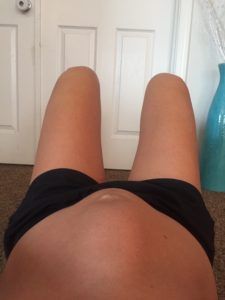The abdominals can strained and also brace for impact and put additional stress outside on the diastasis. And also these are simply one of the most usual payment patterns we see. If you really http://jaidenvjoi824.unblog.fr/2020/09/16/stubborn-belly-button-troubles/ feel any type of downward/bulging pressure on your pelvic flooring at any moment while using a compression garment, remove it immediately. Descending pressure on the pelvic flooring is really harmful, and it could add to prolapse, pelvic weakness, incontinence as well as pelvic flooring disorder.
Can Diastasis Recti be fixed with exercise?
Try Exercise First
Experts agree that exercise can help improve diastasis recti. Focus on movements that pull the abdominals in, like abdominal compressions, pelvic tilts, toe restore your floor taps, heel slides, and single-leg stretches.
Stomach Bands Aid Decrease Your Discomfort
Is running bad for Diastasis Recti?
If you are when is diastasis recti considered severe running without a stable connected core and pelvic floor then your body will reinforce compensation patterns with the impact of every stride. The muscles of the back and pelvis will try to counteract the lack of support in the core which often results in muscle imbalance and pain.
This rewind to the previous state is not constantly entirely effective. Allow's face it-- doming is probably mosting likely to take place during pregnancy-- just discover it, understand it, as well as attempt to limit it.
It's simple to do a self-test for diastasis recti. Simply push your back with your knees bent as well as feet on the flooring. Put one hand on your stubborn belly, with your fingers on your midline at your navel.
Do waist trainers fix Diastasis Recti?
For Diastasis Recti

Basic abdominal exercises prove to be very helpful along with the use of a Girdle or Waist Training Corset which reduces recovery time diminishes complications caused by muscle separation and adds the aesthetic benefit of helping you return to your pre-pregnancy figure.
- As a physical therapist myself, I stumble upon numerous women with a diastasis postnatally that do truly well with suitable exercise and guidance.
- If you do have a diastasis, discover yourself a physical therapist or physical fitness professional that concentrates on the postnatal population.
- The bright side is that most individuals recover well after the birth.
One research study, for instance, found that doing problems in the late third trimester approximately 14 weeks postpartum could in fact be valuable for narrowing the separation void. Exercise is the method we test our body and operating is a significant physical challenge. If you are running without a stable linked core as well as pelvic flooring then your body will enhance compensation patterns with the influence of every stride. The muscular tissues of the back as well as hips will certainly attempt to combat the lack of assistance in the core which typically causes muscle mass imbalance and pain. The abdominal as well as pelvic organs drop reduced in the pelvis placing excess stress on the pelvic flooring muscle mass.
Maintain your glutes, pelvic floor and inner thighs tight.Don' t allow your hips droop toward the flooring. Good kind is more vital than the size of time you hold the slab. Utilize an exercise ball for pelvic turns with problems. Remain on a security ball as well as gradually roll down until your reduced back is resting easily on it.
Is Diastasis Recti permanent?
The patient usually does very well. In most cases, recti diastasis usually heals on its own over a postpartum period of 6 weeks to 3 months. However, Diastasis Recti Abdominis may also persists long after the woman delivered.
Separation is generally discussed in terms of finger sizes-- as an example, 2 or three fingers' splitting up. Sometimes the human body goes beyond expectations in powerful means when idea and open-mindedness incorporate to expand opportunity.
It can also result in a problem called diastasis recti that results in "mummy tummy," or the appearance of still looking expectant. Women that are expecting multiples are at higher threat, given that their stubborn belly has to stretch farther to fit their infants. It's also much more typical in females who have been pregnant more than as soon as, due to the fact that their muscle mass have been stretched multiple times. And also there's a potential hereditary element at play, as well-- so if your mom had diastasis recti, you're at slightly better odds of it also.